Melasma
Understanding Melasma and Its Triggers
Melasma is a common skin condition characterized by brown or gray-brown patches on the face. It often appears on the cheeks, forehead, nose, and chin, and is more common in women, especially during pregnancy or with the use of birth control pills. Melasma is caused by an overproduction of melanin, the pigment that gives skin its color.
Melasma can be triggered by sun exposure, hormonal changes, and certain medications. Although it is not harmful, melasma can affect one's appearance and self-esteem. Preventive measures and treatments can help manage and reduce its appearance.
Effective Melasma Treatments at Riva Dermatology
At Riva Dermatology, we offer a range of treatments for melasma, including topical creams, chemical peels, and laser therapy. Our dermatologists will create a customized treatment plan to help you achieve clearer, more even-toned skin.
Examples of Melasma
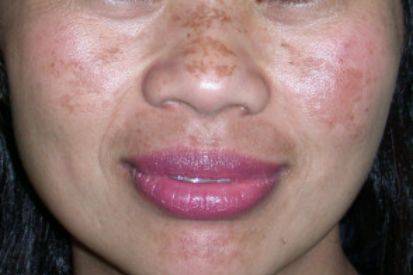
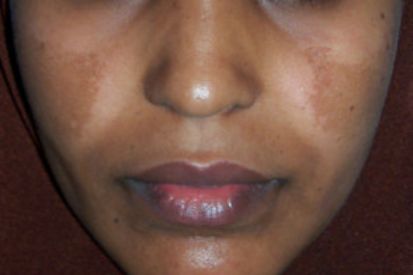

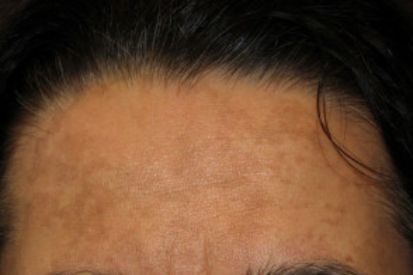
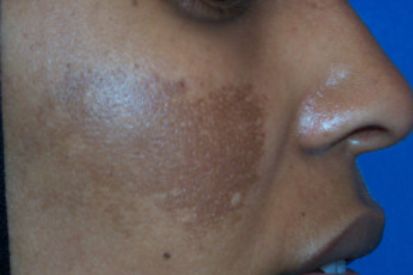
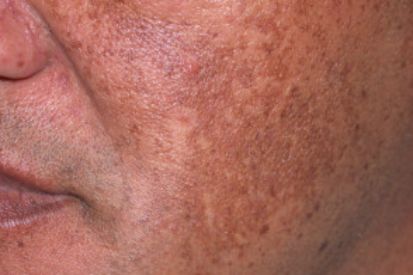
What are the Symptoms of Melasma?
- Very common skin disorder that occurs on areas of the face that are exposed to the sun, creating dark discolorations on the skin.
- Melasma generally manifests itself in a brown or gray discoloration across the cheeks, forehead, nose, chin, or upper lip.
- Melsama is most often uniform and symmetrical on both sides of the face.
Causes of Melasma
- Melasma can affect anyone, but more prevalent among young women with darker or olive skin types.
- Associated with female hormones estrogen and progesterone, making it more common in women who are pregnant.
- Melasma occurs with sun exposure.
- Certain skin products can irritate or worsen melasma.
How to Prevent Melasma
- Sunscreen: Apply a broad-spectrum sunscreen with a high SPF daily, even on cloudy days. This shields the skin from UV rays, a significant contributor to melasma.
- Sun Avoidance: Minimize sun exposure, especially during peak hours. Wear wide-brimmed hats and protective clothing when outdoors.
- Skincare Routine: Use skincare products that contain ingredients like niacinamide, vitamin C, or alpha arbutin known for their skin-lightening properties. Consult a dermatologist for personalized recommendations.
- Hormonal Management: For women, discussing hormone-related triggers with one of our trusted dermatology providers and exploring birth control options that may not exacerbate melasma can be beneficial.
- Avoiding Irritants: Limit the use of products or treatments that may irritate the skin, potentially triggering melasma. This includes harsh chemical peels or abrasive exfoliants.
- Pregnancy Planning: For women experiencing melasma related to pregnancy, consulting with a healthcare provider before conception can help manage hormonal changes that may contribute to melasma.
- Healthy Lifestyle: Adopting a balanced diet, staying hydrated, and managing stress contribute to overall skin health.
Melasma FAQs
Melasma is primarily caused by an overproduction of melanin. Triggers include sun exposure, hormonal changes, and certain medications.
The good news is that melasma can be treated. Dermatologists have various options, including topical creams, chemical peels, and laser treatments. With the right approach, those patches can fade away.
Treatment options include topical creams with hydroquinone, retinoids, chemical peels, and laser therapy. Sun protection is crucial for managing melasma.
While it cannot always be prevented, wearing sunscreen daily, avoiding sun exposure, and using protective clothing can reduce the risk of developing melasma.
Yes, you can wear makeup if you have melasma. Opt for non-comedogenic and fragrance-free products to avoid irritation. Look for makeup that contains sunscreen (SPF 30 or higher) to provide additional protection from UV rays. Green-tinted primers can help neutralize the brown or gray-brown patches, and concealers or foundations with high coverage can help even out skin tone.
Sun exposure is one of the main triggers for melasma, as UV rays can stimulate the overproduction of melanin, worsening the condition. To manage melasma, it is crucial to use broad-spectrum sunscreen daily, even on cloudy days. Wearing hats, sunglasses, and seeking shade whenever possible can also help protect your skin from harmful UV rays and prevent melasma from worsening.
From our QualDerm Family of Brands: The Importance of Sunscreen
How to Treat Melasma
We pride ourselves on working closely with patients, providing guidance on skincare routines, and recommending products to manage melasma effectively. Regular follow-ups ensure progress monitoring and adjustments to treatment plans, supporting you on your journey to healthy skin.
Featured Products for Melasma
Check your local office for current stock!
Check your local office for current stock!


